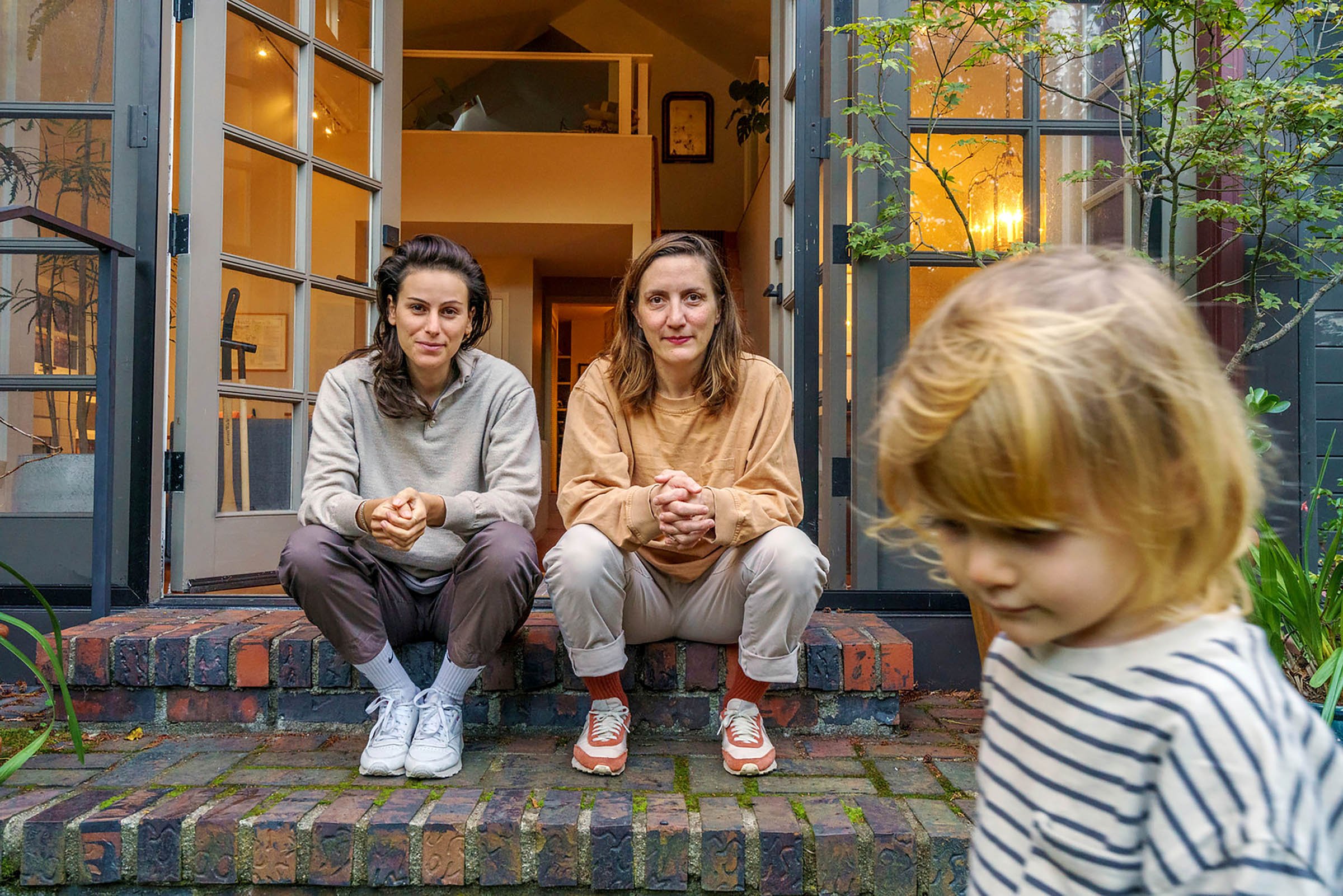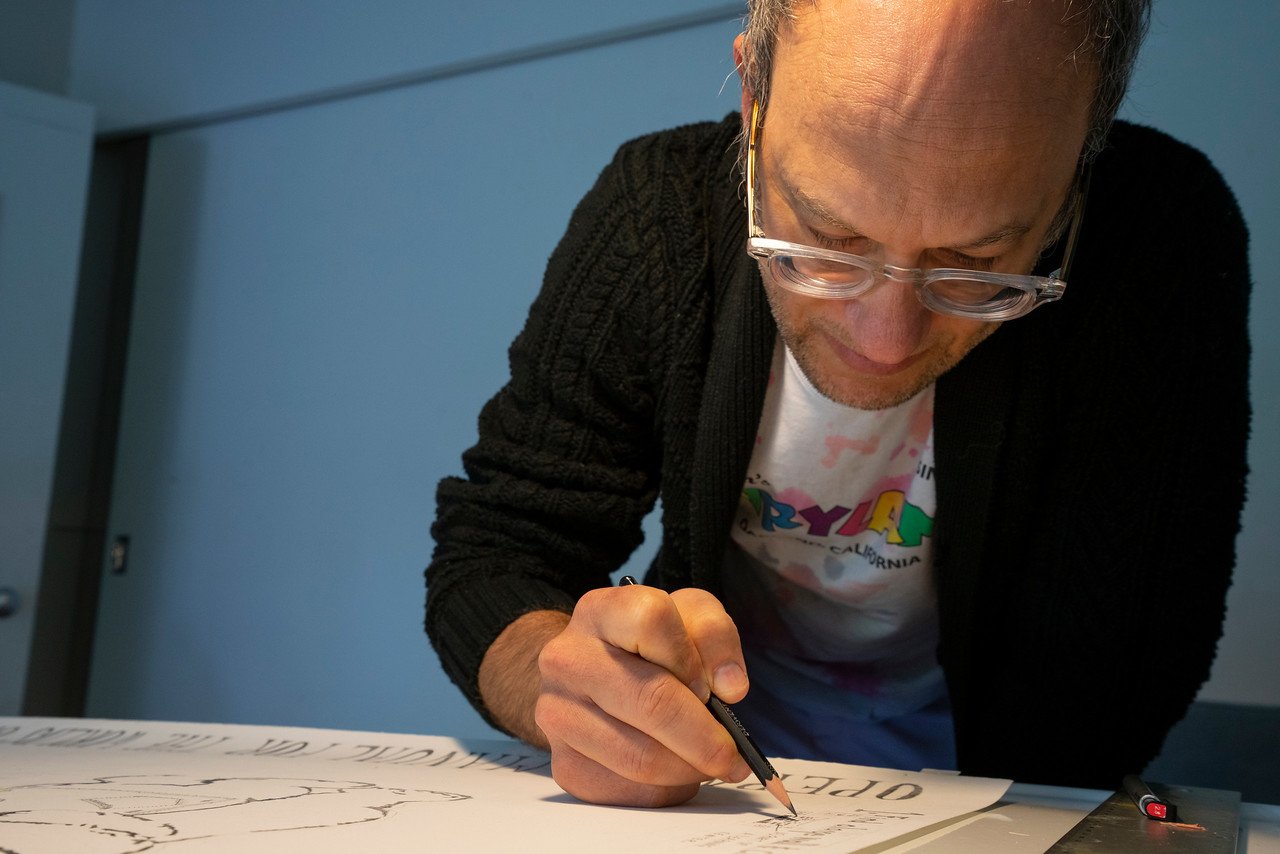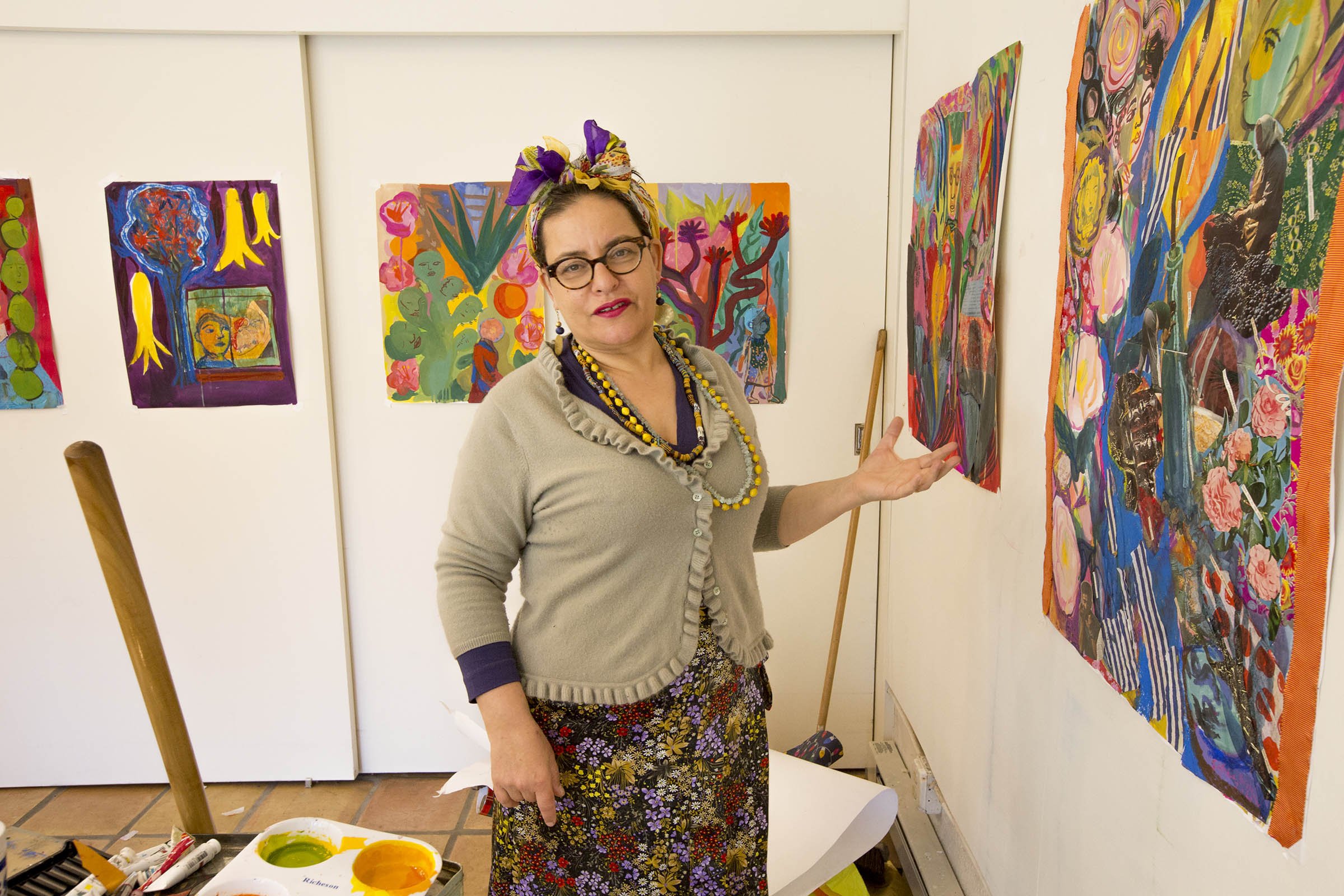Hadassa Goldvicht
Performance Artist, Photographer, Visual Artist—August ’18 through January ’19
Website hadassagoldvicht.com | Based In Jerusalem, Israel
Q: You came to the Peleh Residency at a moment when your creative, professional and familial identities were out of balance.
A: I arrived in Berkeley during a time I felt very overwhelmed. It had been five years since I gave birth to the first of my two girls, and I had just finished several major projects. But I wasn’t taking any time to look at my life and figure out how to run my career constructively. I needed to reconstruct my life so parenthood and making art could make sense together, both practically and emotionally.
Q: In other words, your goal at Prince Street wasn’t only, or even primarily, to create art during your stay.
A: Unlike other artists who came to the Berkeley residency to make art, I came here to rethink different aspects in my life so I could continue to make art. Our time on Prince Street definitely allowed me to go through that transformation I so very much needed.
Q: And were you able to find the balance of art-making and parenting?
A: The residency gave us the opportunity we never had as a family to rethink how we parent, and how we take care of ourselves. When we got here we really didn’t know how to do that. Yonatan [my husband] and I were both workaholics. Our time in Berkeley gave us the time to learn how to care for ourselves and find more balance in our lives.
Q: Was there a specific time when all these things came together?
A: I can point to the moment when I started finding balance again. It was in September, and I was walking with Hadarya [my elder daughter] on Prince Street, talking and looking at the flowers and the trees. Something within me shifted, some change in my ability to not feel torn all the time. I began being able to enjoy parenthood again after years of having stress take over the ability to be present. Something opened up that made the next part of this journey possible. It made me see the kind of life I wanted to have with my family, and how I could do that in a sustainable way.
When I was pregnant with the girls, I was scared that I wouldn’t be an artist after I had kids. How could I do it all? After the births, I booked crazy projects on purpose, to make sure I kept going. But after Ariel was born [the year after the residency], I wasn’t scared of not working. I knew what I was doing. The sense of possibility I feel is completely a product of our time in Berkeley.
Q: The epilogue to your time here was extraordinary.
A: It’s not a coincidence, I think, that I got pregnant in Berkeley.
Q: But that’s not the end of the story.
A: When I got back to Israel, I had to stay in bed for six months of bed rest. And after that came a long recovery and then Covid started. But in terms of my happiness, and balancing life and work, everything changed for the better. I felt the residency continued in Israel in a way, and started a project called The Bed Residency that was a continuation of the work I began in Berkeley. Our time in Berkeley charged us with the energy we needed to deal with the challenge of me being in bed for such a long time, but more than that, it gave us the time to figure out how to be better parents, communicate with each other, and balance our life.
Credit: Eli Posner
Q: Despite the impact of the residency on your personal life, you still managed to move some important artistic pieces forward.
A: More practically, I used my time at the residency to rethink the business aspects of being an artist and was later able to better price my work, and to say no to jobs that were no longer a good fit. I was able to be focused enough to take the time to learn how to do that.
In terms of the work itself, I’ve begun making work on a larger scale. It was one of the changes that emerged from taking time to reevaluate my relationship to my work and generally feeling more comfortable in my own skin. The new work includes a huge whale for Israel’s National Library, a video for the permanent collection at the Israel Museum, and a piece for Hadassah Hospital’s Maternity Ward.
This last piece was for the Jerusalem Festival, which took place in a different format due to Covid 19. Several artists were chosen to create work in institutions that were struggling and doing meaningful work during Covid, and I chose Hadassah Hospital. I was both born there and gave birth to my children there and I wanted to create work that gave them — the patients and the staff — an opportunity to reflect on their lives.
Another ongoing work was a very large institutional work I filmed in the National Library in Jerusalem. It’s very much a piece that is related to the architecture of the building as a body in itself, all how the exterior and the interior, what’s public and what is very private, mix into one another.
When I talk with artists around the world about the residency, they can’t believe that something like this exists. I hope that it continues, and that it can even be duplicated in other places. It has had such an impact on me and my family, and I know it will continue to impact other artists who will have the chance to experience it.
Hadassa Goldvicht is an interdisciplinarity artist, currently living and working in Jerusalem.
Her works include both large scale public interventions working together with members of communities and institutions, alongside works created with her own family members. using sensibilities that belong in the private domain into the public realm, and vice versa. Her video, installations, and photographs explore the relationship between language and hierarchy, ritual and care taking, while attempting to read and rewrite the emotional and social/political texts written in the body.
She received a BFA from the Rhode Island School of Design (2004) and an MFA from the School of Visual Arts in New York (2007).
Her work has been exhibited widely, including The Israel Museum, Jerusalem; The Jewish Museum, New York; The Tel Aviv Museum; The Beijing Biennial, The Zacheta National Gallery of Art, Warsaw; The National Library, Jerusalem; The Fondazione Querini Stampalia, Venice. Her works are included in both private and public collections, including The Jewish Museum, NY, The Israel Museum, The Frankfort Jewish Museum, The Tel Aviv Museum, The Fondazione Querini Stampalia, and The Center for Book Arts in NY.







